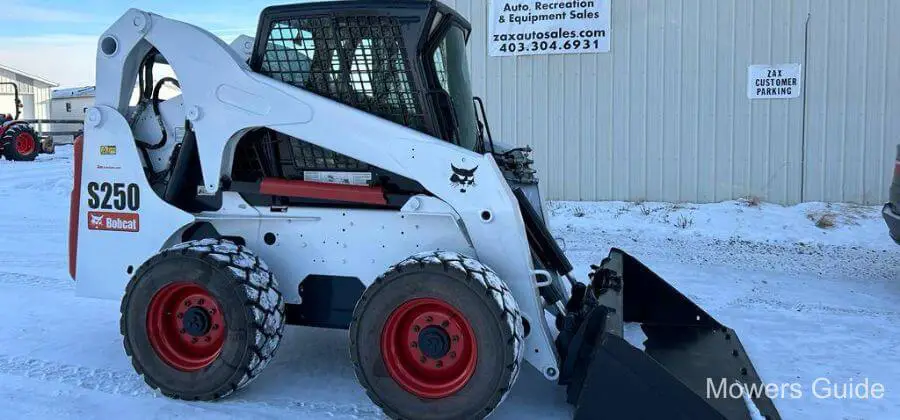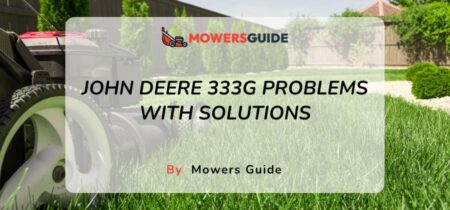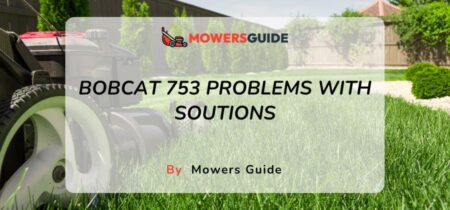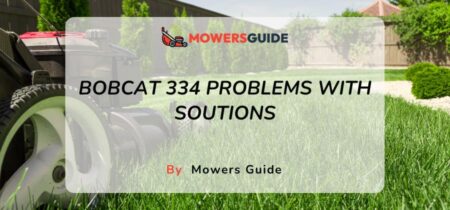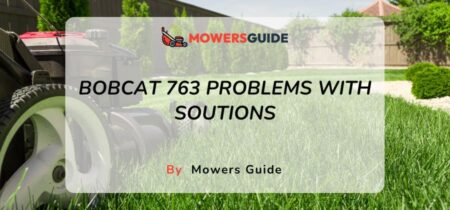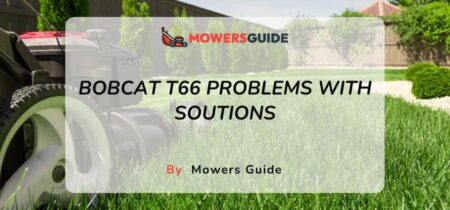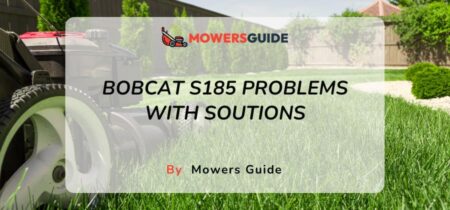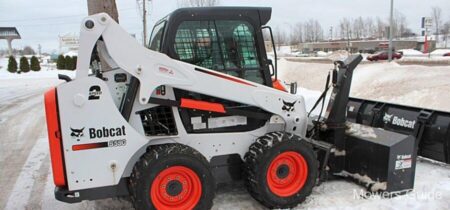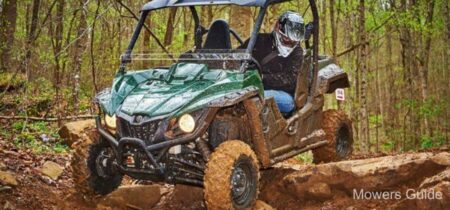If you have a Bobcat S250 skid steer loader that’s acting up. Frustrating, right? They’re not cheap, and now they’re not working like they should. Luckily, many of the issues that arise with the S250 are common and can be fixed yourself.
Before you haul that skid steer loader into the shop and shell out big bucks for repairs, check out this list of the 7 most common Bobcat S250 problems and how you can resolve them yourself. With a little mechanical know-how and some basic tools you’ve probably already got in your garage, you’ll be able to fix your Bobcat S250 in no time and save yourself a ton of money.
Bobcat S250 Problems with Solutions
The Bobcat S250 is a popular skid steer loader known for its versatility and reliability. However, like any machinery, it’s not immune to issues. Here are seven common problems associated with the S250, accompanied by potential solutions to help operators address them efficiently.
1. The Engine Won’t Start
If your Bobcat S250 skid steer loader won’t crank, the problem is likely in the starting or fuel system. Check the battery. If it’s dead, recharge it or replace it.
Next, ensure the fuel valve is open and the filter is clean. A clogged filter prevents fuel from reaching the carburetor. Draining the old fuel and refilling the tank with fresh gas may do the trick.
Check the spark plugs too. Fouled or damaged plugs prevent engine ignition. Remove plugs, clean or replace them, and re-gap to the specs in the owner’s manual.
Lastly, the starter solenoid may be stuck or burned out. Tap the solenoid to free a stuck plunger. If that doesn’t work, it needs a replacement.
With a charged battery, a clean fuel system, good plugs, and a functional starter, your bobcat should fire right up. If it still won’t start, it’s best to have a certified mechanic diagnose and repair the issue.
2. Ground Fault
The issue we have is that the grappling exhibits odd behavior, such as automatically going fully open or fully closed, or not obeying commands. It is controlled by a side-to-side toggle on the right steering lever.
The machine frequently beeps three times, and when it does, an exclamation point is illuminated next to the key.
In this instance, a ground fault could also refer to wires that are so severely damaged that “signals are getting crossed.” A ground fault is defined as a current that leaks into the ground. When returning to the valves, if at all feasible, follow the electrical harness.
On the exposed ends of the wires, look for any signs of overheating, such as swelling, discoloration, or melting, to see whether the harness has been damaged. The transition would be our starting point. Although we have never observed a ground wire on a solenoid discoloration if there were one with a loose ground connection, that might be the cause of your problem. The valve body should then be closely examined.
3. Steering and Traction Issues
Steering and traction issues often come down to common problems with Bobcat’s transmission or tires.
Checking the Transmission
If your Bobcat is struggling to steer or move, the transmission could need maintenance. Check the transmission fluid level; if it’s low, add more fluid. The low fluid level prevents the transmission from operating properly. You should also inspect the transmission for any visible damage or leaks. Has the transmission been serviced if issues continue after adding fluid or if you notice the damage?
Transmission problems cause difficulties with steering, changing directions, or speeds. Get it checked right away to avoid permanent damage.
Inspecting the Tires
Faulty or unevenly worn tires also lead to steering and traction problems. Examine tires for damage like punctures, tears, or uneven tread wear, which reduces grip. Make sure tires are inflated to the proper pressure, as under-inflated tires don’t provide enough traction.
Consider how long it’s been since your last tire rotation; rotating extends the life of your tires. If it’s been a while, rotate your tires to even out tread wear, then test your Bobcat’s performance. New or rotated tires often fix steering and traction issues.
Continuing issues could indicate drivetrain damage, so have your Bobcat serviced if problems persist after checking the transmission and tires. It’s best to address these problems early to avoid costly repairs down the road.
4. Joystick Issues
The joystick controls the loader arms and bucket. If it’s not responding, check these fixes:
Fuses
The fuses provide power to the joystick controls. Check the fuse box for any blown fuses and replace them as needed. The fuse diagram in the owner’s manual will show the correct fuse sizes.
Hydraulic Fluid Level
One of the most common problems with the Bobcat S250 is hydraulic leakage. The low hydraulic fluid prevents the loader from operating properly. Check the sight glass on the hydraulic fluid reservoir and refill it to the proper level if it is low.
Cable Connections
Faulty connections between the joystick and the hydraulic valves can disrupt signals. Inspect the cable connections for any damage or corrosion, and clean or tighten them as required.
Joystick Calibration
Over time, the joystick can fall out of calibration. You may need to recalibrate it to restore proper function. See your dealer for calibration; it requires special diagnostic tools.
Hydraulic Pump
If the other fixes don’t work, the hydraulic pump may need repair or replacement. Have a certified Bobcat mechanic inspect and test the pump. Pump issues can be expensive to fix, so try simpler solutions first before replacing the pump.
5. Communication Loss
If your steer loader suddenly stops responding to the control panel or handheld transmitter, you may have lost communication between the two. First, check if the transmitter batteries need replacing; this is an easy fix that can restore connectivity.
If that’s not the issue, inspect the transmitter and receiver for any visible damage to the antennas or wiring. Minor damage can often be repaired. As a last resort, you may need to replace the transmitter, receiver, or both to resolve a communication loss problem.
The good news is that these parts can typically be purchased through a Bobcat dealer if they are still under warranty.
6. Hydraulic Issues
If your skid steer seems sluggish or the blades won’t engage, you may have air in the hydraulic system or low fluid levels, both of which can reduce performance. Check the hydraulic reservoir and refill it if needed. You should also bleed the air from the hydraulic lines and cylinders.
Locate the bleeder valves on the cylinders and loosen them to release any trapped air. Pump the lift lever or tilt the lever slowly until the fluid runs clear. Tighten the bleeder valves and check the fluid level again. Adding a hydraulic stabilizer or conditioner product can also help prevent future issues.
7. Engine Error
If the engine suddenly stops running or is making strange noises, you likely have an engine error that requires attention. Check the engine oil level first. Low oil can cause the engine to overheat and shut off. Add oil if needed, and restart the loader.
Still not starting? It could be a faulty spark plug or a fuel issue. Check that the spark plug is clean and properly gapped. Make sure there’s fresh gasoline in the tank, as old fuel loses volatility.
Conclusion
Here are 7 common Bobcat S250 problems and easy fixes to get your loader back up and running for yard work. These machines are tough, but even the best equipment needs regular maintenance.
Don’t get frustrated if you run into problems. Just review the manual, do some basic troubleshooting, and you’ll likely find the fix is something simple you can handle yourself. If all else fails, your local Bobcat dealer is there to help get you back on the skid steer in no time. Keep changing the filters regularly and performing the recommended maintenance, and your Bobcat skid steer should provide many more years of reliable service.
FAQs
Is Bobcat a reputable company?
Bobcat, who is credited with inventing the skid steer more than 60 years ago, is nearly always used in construction and landscaping. They are the best-selling skid steer manufacturer in the world because they offer the broadest selection of models available on the market in terms of horsepower and ROC.
What is the highest speed of a bobcat?
Bobcats can run up to 30 mph (48 kph) and are superb climbers. With unmatched patience, they stalk their prey and frequently cover 2 to 7 miles (3 to 11 kilometers) in one evening while hunting and patrolling their territory.
How long does a Bobcat engine run for?
A 40-hp machine, on the other hand, will probably need an overhaul after around 4,000 hours; as a general rule, an 80-hp machine won’t need an engine overhaul until it’s past 8,000 hours.
What number of cylinders does a Bobcat have?
The Bobcat 23.5-hp UV34 diesel UTV is made to handle difficult projects, such as hauling supplies and tools or towing massive trailers and machinery. A three-cylinder diesel engine offers the performance you require with a flatter horsepower and torque profile.
Related Post:
- 6 Bobcat S590 Problems – Troubleshooting and Solutions
- 7 Common Bobcat S250 Problems (Complete Solutions)
- 8 Common Bobcat S185 Problems (Complete Solutions)
- 8 Common Bobcat CT1025 Problems (Complete Solutions)
- 9 Common Bobcat T770 Problems (Complete Solutions)
- 6 Common Bobcat T66 Problems (Complete Solutions)
- 6 Common Bobcat 763 Problems (Complete Solutions)
- 7 Common Bobcat 334 Problems (Complete Solutions)
For more outdoor vehicle problems solutions visit here and for more guides related to mowers visit Mowers Guide

